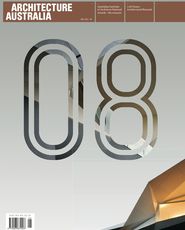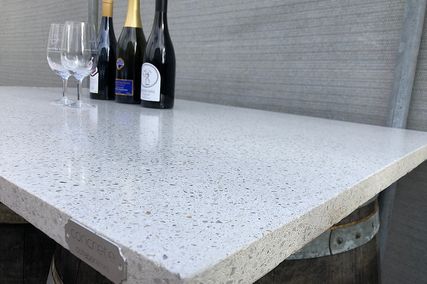Developing the awards and the profession — The national jury responds to this year’s entries.
Overall, 2008 has been a very strong year for architecture. This year’s Australian Institute of Architects National Awards jury reviewed 129 submissions in twelve categories and short-listed forty for further assessment. This is the second year of operation for the Institute’s new awards policy – the awards now recognize more of the profession’s diverse range of skills and the new policy has significantly improved the assessment process, thereby ensuring better, more informed discussion and debate. The policy may not have reduced the controversy that follows some jury decisions, but these decisions are now more transparent and trackable. In each award category, a certain threshold number of entries dictates that juries must now nominate at least one award, holding up the year’s work against previous years and allowing comparisons to be more easily made over time. Nonetheless, the 2008 jury has some further recommendations. The jury considers the Colorbond Award for excellence in the use of steel to be worthy of review. There are many options to consider, including expanding the assessment criteria to encompass excellence in the use of any material. Many submissions met the current criteria, with the selection for the award demonstrating excellence in steel design as an essential and comprehensive element of the architectural concept.
Like juries in other years, the 2008 jury also questioned the concept of a separate award for sustainable architecture, noting that addressing sustainable design issues is now integral to the design process of most buildings. This year’s submissions also generally demonstrated this.
The new Small Project category provided many submissions from younger or smaller practices. More diverse areas of practice are now accommodated by this category and this year’s jury considered submissions from any category that qualified as “small” in some way. Interior Architecture presented certain issues, as many submitted projects were also entered or considered in other categories, particularly where an interior could be distinguished for a distinctive contribution to a highly valued outcome.
The award criteria in Urban Design now encourages complex urban work, including unbuilt work in the form of masterplan submissions. The jury noted that significant work being undertaken by the profession in urban design was not submitted for assessment. This may indicate that the new criteria have not yet been fully recognized, or that this work often involves multiple client groups and consultants and is consequently difficult to assemble for a complying submission. The jury anticipates that, as the approval process increasingly requires this type of work to be undertaken, future submissions will increasingly reflect the new assessment criteria.
The Heritage and 25 Year Awards reflect an exceptional range of professional skills, with the conservation, restoration and adaptation of historic buildings demonstrating an equally impressive contemporary architectural design sensibility. Experiencing the combination of important historic fabric with considered contemporary architecture was a highlight of this year’s jury deliberations. The jury debated whether the Heritage category would be better served by distinguishing submissions that are essentially conservation and restoration projects from those that involved changes of use and new work.
The Residential – Single category is historically strong and this year the jury reviewed another large “crop” of exceptional submissions. The jury’s decisions reflect the wide range of house design strategies, sites and briefs being undertaken throughout Australia. The Residential – Multiple category demonstrated that NSW planning law interpreted by exceptional architects is currently most likely to deliver the best multiple housing in Australia.
In the Commercial category, the jury noted the value of fine architecture as a driver for the improvement of blighted or underdeveloped urban areas. Architects led in the design process, adding public purpose and significant public domain benefits to commercial briefs.
Australian architects also excelled in the International category, which had a large and impressive range of submissions. Exceptional submissions came from residential and major public infrastructure briefs. This work often took place in design offices from both Australia and other nations, reflecting the global nature of the profession today.
Finally, the Public Building category was also exceptionally well represented, with many outstanding submissions from urban, suburban and regional locations. Importantly, public funding was involved in some of the excellent work examined; however, the most remarkable projects this year involved private secondary school buildings.
The jury thanks the many clients and architects who ensure, through participation in the awards process, that architecture is advanced through discussion, exhibition, publication and evaluation in the public interest.
2008 National Architecture Awards Jury: Alec Tzannes (jury chair), Peter Elliott, Sue Phillips, Geoff Warn, Simon Knott















